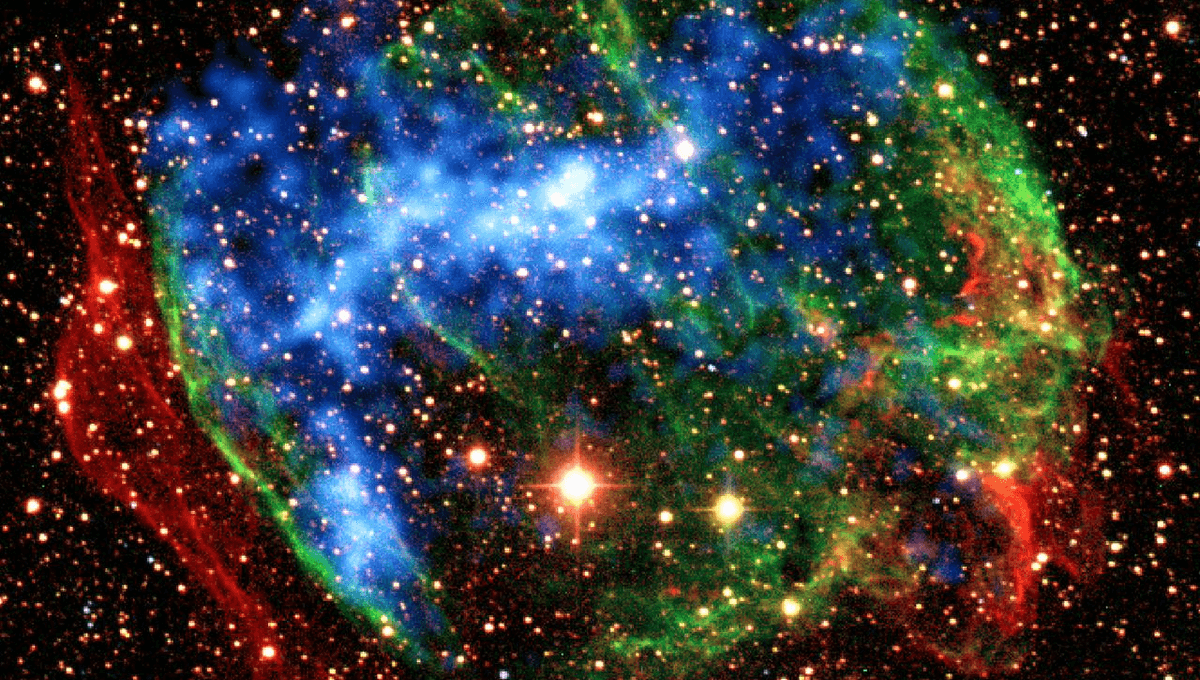
The composition of a tiny grain within an Antarctic meteorite alerted astronomers it predated the Sun. On further investigation, they have concluded the mix of isotopes present requires the grain to have been formed from the output of an unusual type of supernova, which seeded the galaxy with some very distinctive isotopes.
Although most meteorites have been processed by being incorporated into asteroids before being knocked off in collisions, a precious few provide a direct record of the material that formed the Solar System. Known as primitive meteorites, these are particularly precious to astronomers, but some offer something even better – tiny fragments whose exotic origins are revealed in their unusual compositions.
As soon as Dr Nicole Nevill, now at Johnson Space Center, examined a grain within meteorite ALH 77307 she realized this was something special.
“Material created in our solar system have predictable ratios of isotopes – variants of elements with different numbers of neutrons. The particle that we analysed has a ratio of magnesium isotopes that is distinct from anything in our solar system,” Nevill said in a statement. “The results were literally off the charts. The most extreme magnesium isotopic ratio from previous studies of presolar grains was about 1,200. The grain in our study has a value of 3,025, which is the highest ever discovered.”
Most presolar grains are thought to come from red giants, but some have compositions more consistent with being the products of supernovae. To get 2.5 times the amount of magnesium-25, compared to the normally more common Mg-24 suggests this was no ordinary supernova.
Although they acknowledge an alternative explanation of the grain coming from a nova, Nevill and co-authors think it is far more likely the source was a hydrogen-burning supernova, a rare kind of Type II supernova.
“Hydrogen burning supernova is a type of star that has only been discovered recently, around the same time as we were analysing the tiny dust particle. The use of the atom probe in this study, gives a new level of detail helping us understand how these stars formed,” said Curtin University’s Dr David Saxey.
Curtin’s Professor Phil Bland told IFLScience: “There is an amazing program to find these meteorites and take a sample from each to see if they are a rare or common type. Then other researchers see if they would like to request access to them.”
ALH 77307 stands out as one of the half dozen or so most primitive meteorites ever found, having undergone little processing either before forming into an asteroid, or while part of one.
Although its primitive state marked 77307 for further investigation, spotting presolar grains was once a needle in a haystack hunt. However, Bland was part of a team that developed a way geologists can test a relatively large portion of a meteorite in search of an anomaly that tells them when to look more closely. Applying this to 77307 indicated there was something to find.
The grain itself is 400 by 580 nanometers, unusual when most are tens of nanometers up to 500 nanometers across, but Bland told IFLScience the size itself is not surprising, although it did make the grain easier to study.
The presence of the grain indicates a hydrogen-burning supernova must have gone off in the vicinity of the cloud that became the Sun and its planets. Presumably, it wasn’t very close, however, or we’d have found more grains like this before. Every presolar grain we find, Bland told IFLScience, “Helps us put together a picture of what the dust we formed out of could have been like 4.6 billion years ago.”
We are not merely stardust, but the dust of very specific types of stars.
The discovery is open access in The Astrophysical Journal.
Source Link: Rare Dust Particle Trapped In Ancient Meteorite Is Older Than The Sun